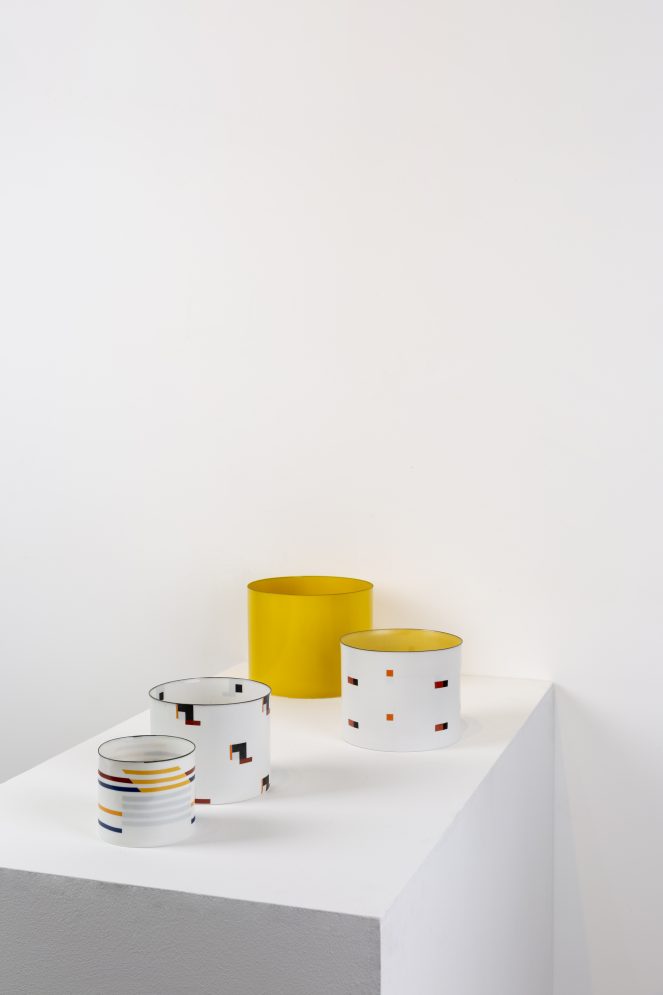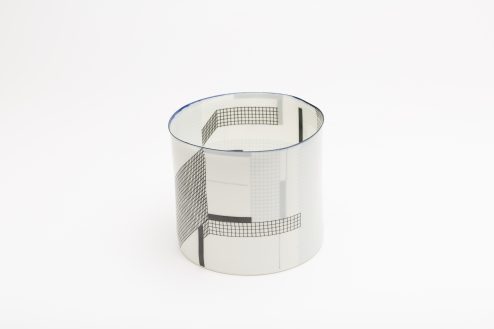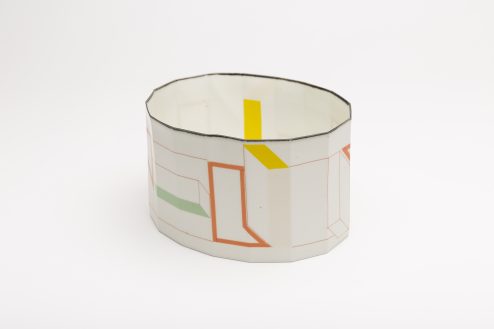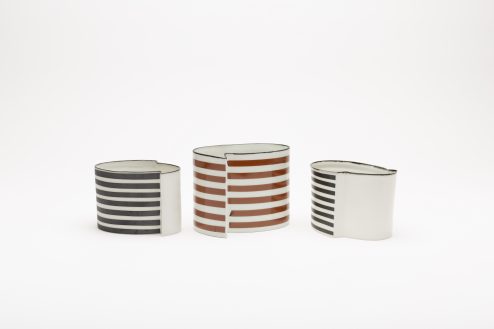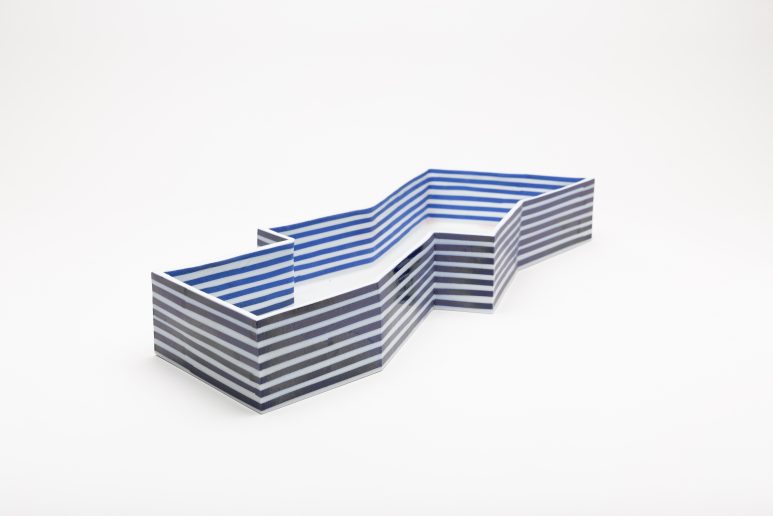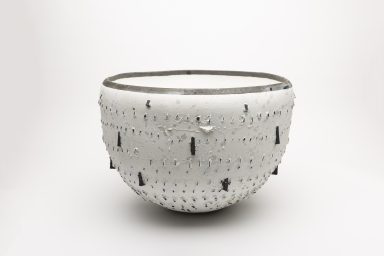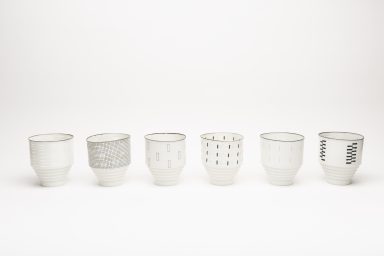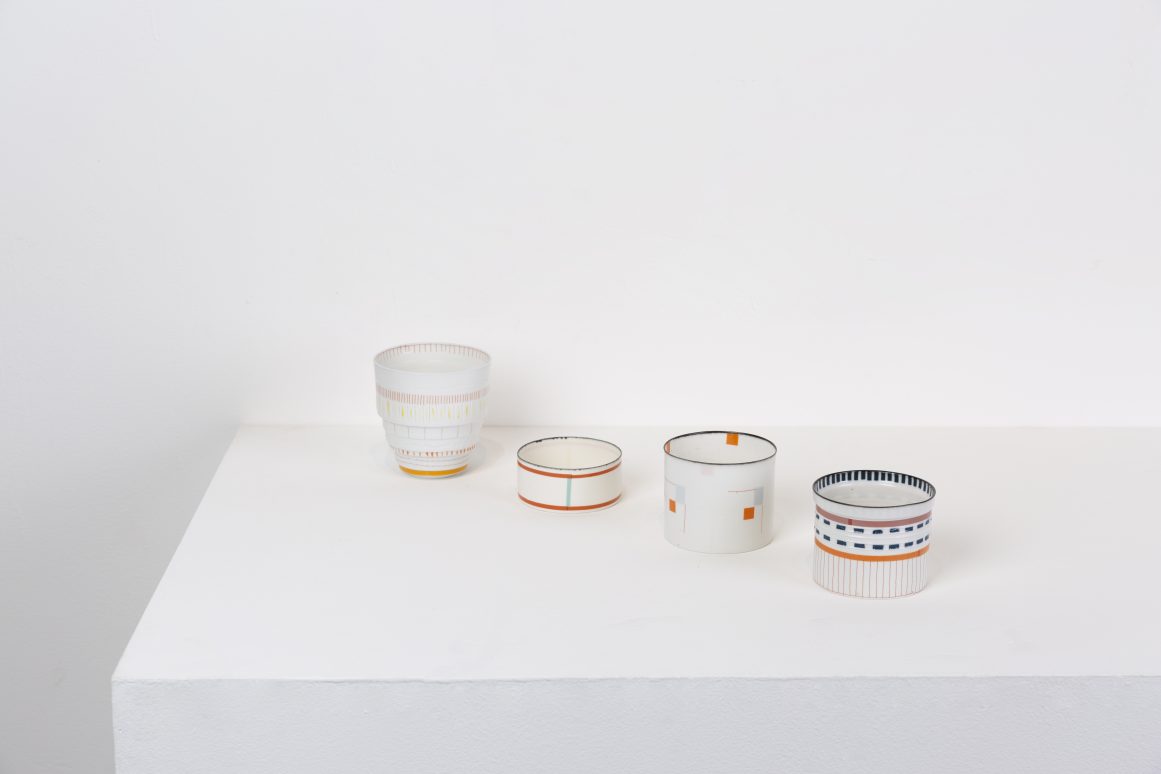Selected Solo Exhibitions
2018 ‘BODIL MANZ’, Gallery LVS, Seoul, Korea
2018 Bodil Manz, The Ceramist, The Scottish Gallery, Edinburgh, UK
2018 Keramiske Beje, CLAY Keramikmuseum Danmark, Denmark
2017 Höganäs Museum, Sweden
2017 The Scottish Gallery, Edinburgh, UK
2017 Oxford Ceramics Gallery, UK
2016 Johannes Larsen Museum, Kerteminde, Denmark
2015 Galleri Weinberger, Copenhagen, Denmark
2014 Time and Space: Bodil Manz, Ann Linnemann Studio Gallery, Copenhagen, Denmark
2013 Bodil Manz: Exploration of Form, Blackwell The Arts & Crafts House, Bowness-on-Windermere, UK
2012 Galleri Weinberger, Copenhagen, Denmark
2011 Galleri Pagter, Kolding, Denmark
2008 Danish Museum of Art and Design, Copenhagen, Denmark
2006 Galerie Pierre, Paris, France
2006 Scottish Gallery, Edinburgh, Scotland, UK
2006 Garth Clark Gallery, New York, USA
2005 Puls Contemporary Ceramics, Brussels, Belgium
2005 Galerie Besson, London, UK
2004 Galerie Nørby, Copenhagen, Denmark
2003 Galerie b 15, Munich, Germany
2003 Garth Clark Gallery, New York, USA
2003 Galerie Carla Koch, Amsterdam, The Netherlands
2002 Puls Contemporary Ceramics, Brussels, Belgium
2002 Galerie Carla Koch, Amsterdam, The Netherlands
2001 Garth Clark Gallery, New York, USA
2000 Galerie Carla Koch, Amsterdam, The Netherlands
2000 Galerie Nørby, Copenhagen, Denmark
1998 Galerie Besson, London
1998 Garth Clark Gallery, New York, USA
1998 Galerie Carla Koch, Amsterdam, The Netherlands
1995 Nederlands Keramiekmuseum, Leeuwarden, The Netherlands
195 Garth Clark Gallery, New York, USA
1984 Lidköpings Konsthall, Lidköping, Sweden
1984 Facet, Bing & Grøndahl, Copenhagen
1971 Maison du Danemark, Paris, France
Selected Group Exhibitions
2018 Clay Museum, Middelfart (Keramiske Veje), Denmark
2017 Adrian Sassoon, Pavilion of Art & Design London, London, UK
2016 Nødvendighed, Johannes Larsen Museet, Kerteminde, Denmark
2015 Keramiske Veje, Sophienholm, Denmark
2014 Adrian Sassoon, COLLECT, Saatchi Gallery, London, UK
2013 Adrian Sassoon, COLLECT, Saatchi Gallery, London, UK
2012 Adrian Sassoon, Masterpiece London, The Royal Hospital Chelsea, London, UK
2012 Clare Beck at Adrian Sassoon, COLLECT, Saatchi Gallery, London, UK
2012 Cuts and Interventions, Copenhagen Ceramics, Frederiksberg, Denmark
2011 Puls Contemporary Ceramics, Brussels, Belgium
2011 Garth Clark, SOFA Fair, Sante Fe, USA
2010 Gudhjem Museum, Bornholm, Denmark
2010 Galerie Helen Poiree, Paris, France
2010 Carla Koch, PAN Amsterdam, The Netherlands
2009 Keramiske Veje, Sophienholm, Copenhagen, Denmark
2008 Design Museum, Denmark
2007 The 4th World Ceramic Biennale, Korea
2007 Ceramics from Denmark, Bayerischer Kunstgewerbe-Verein, Munich, Germany
2007 Transparenz und Masse, Museum Eckernförde, Germany
2007 The 7th International Ceramics Competition, Mino, Japan
2007 The 3rd World Ceramic Biennale, Korea
2007 Biennale Européenne de Céramique Contemporaine, Troyes, France
2006 Neue Keramik, Handwerkform, Hanover, Germany
2006 To Hold, Farmleigh, Dublin, Ireland
2005 Transformations: The Language of Crafts, National Gallery of Australia, Canberra, Australia
2005 The 7th International Ceramics Competition, Mino, Japan
2005 The 3rd World Ceramic Biennale, Korea
2005 Biennale Européenne de Céramique Contemporaine, Troyes, France
2004 4th Ceramic Triennial, Trapholt, Denmark
2004 Keramiske Veje, Den Frie, Copenhagen, Denmark
2004 Galerie Pierre, Paris, France
2004 Museum of Modern Art, Tokyo, Japan
2004 From the Kilns of Denmark, touring USA
2003 The International Invitational Exhibition, Korea
2003 Crafts Now, Kanazawa, Japan
2003 Museum of Modern Ceramic Art, Gifu, Japan
2003 2nd World Ceramic Biennale, Korea
2002 Galerie Pagter, Kolding, Denmark
2002 From the Kilns of Denmark, touring Paris, Berlin & USA
2002 Campio-Masterpieces, Palazzo Bricherasio, Turin, Italy
2002 The Gardiner Museum of Ceramic Art, Toronto, Canada
2002 Biennale de la Céramique, Andenne, Belgium
2002 The 6th International Ceramics Competition, Mino, Japan
2001 Galerie le Vieux-Bourg, Switzerland
2001 Sigtuna Museum, Sigtuna, Sweden
2001 Poetics of Clay, Philadelphia Art Alliance, Philadelphia, USA
2001 Pakhuset, Nykøbing, Denmark
2000 The Danish Wave, China
2000 Form and Glasur, Hoechst, Germany
2000 The Sixth Taiwan Golden Ceramic Award Exhibition, Taiwan
1999 Living Design – Dialogue, touring Klaipeda, Riga, Tallinn, Estonia
1999 (UN) Limited, Craft Council, London
1999 Artist from the World, Museo Internazionale delle Ceramiche, Faenza, Italy
1999 Form-Transformation 1966-99, Kunst Industri Museet, Copenhagen, Denmark
1999 Keramik aus Dänemark, Galerie Handwerk, Munich, Germany
1998 Triennale de Porcelaine, Nyon, Switzerland
1998 Galerie für Englische Keramik, Marianne Heller, Germany
1998 Sybaris Gallery, Oaklahoma, USA
1997 Museum voor Sierkunst, Gent, Belgium
1996 Yufuku Gallery of Fine Arts, Tokyo, Japan
1996 Bewegung Europäische Keramik 96, Keramion, Germany
1996 Form und Glasur, Hoechst, Tyskland, Denmark
1996 Das Andere Gefäss, Saarländisches Künstlerhaus, Saarbrücken, Denmark
1995 Edinburgh City Art Centre, Edinburgh, Scotland
1995 Gallery Nørby, Copenhagen, Denmark
1994 1st Ceramic Triennial, Trapholt, Denmark
1994 Tapei Fine Arts Museum, Taipei, Taiwan
1993 Keramik Europas, Keramikmuseum, Westerwald, Germany
1992 Kunstindustrimuseet, Helsinki, Finland
1992 Triennale de Porcelaine, Nyon, Switzerland
1991 Museum Het Princessehof, Leeuwarden, The Netherlands
1990 Gallery Amphora & Singer Museum, Oosterbeek, The Netherlands
1989 Scandinavian Ceramics and Glass, Victoria and Albert Museum, London, UK
1989 Röhsska Museet, Gothenberg, Sweden
1987 Boymans van Beuningen Stichtung Museum, Rotterdam, The Netherlands
1987 The Seibu Art Forum, Tokyo, Japan
1981 Museum of Art, Pennsylvania State University, USA
1980 Galerie de Proen, Amsterdam, The Netherlands
1977 The Danish Museum of Decorative Art, Copenhagen, Denmark
1970 Städtlisches Museum, Wiesbaden, Germany
1969 Den Permanente, Copenhagen, Denmark
1966 Mexico City, Mexico
Public Collections
UK
Victoria and Albert Museum, London
DENMARK
The Danish Museum of Art & Design, Copenhagen
The Danish Arts Foundation, Copenhagen
The New Carlsberg Foundation
Trapholt Museum of Modern Art and Design, Kolding
SWEDEN
Rohsska Museum of Design and Craft, Gothenberg
Nationalmuseum, Stockholm
FRANCE
Manufacture nationale de Sèvres, Sèvres
Musée des Arts Décoratifs, Paris
GERMANY
Neue Pinakothek, Munich
Museum für Kunst und Gewerbe(MKG), Hamburg
Keramikmuseum Westerwald, Höhr-Grenzhausen
Museum Keramion, Frechen
NEDERLAND
Museum Boijmans Van Beuningen, Rotterdam
Keramiekmuseum Princessehof, Leewarden
ISRAEL
The Israel Museum, Jerusalem
CANADA
Musée des Arts Décoratifs de Montreal, Québec
Gardiner Museum, Toronto
USA
Palmer Museum of Art, Pennsylvania
Los Angeles County Museum of Art, Los Angeles
Seattle Art Museum, Seattle
The Houston Museum of Fine Arts, Texas
Everson Museum of Art, New York
The Newark Museum, New Jersey
The Mint Museum of Craft and Design, North Carolina
Spencer Museum of Art, Kansas
Detroit Institute of Art, Michigan
KOREA
Amore Pacific Museum of Art, Seoul
Korean Craft Museum, Chungju
Korea Ceramic Foundation, Icheon
JAPAN
Museum of Modern Ceramic Art, Gifu
TAIWAN
Taipei Fine Arts Museum, Taipei
Selected Grants and Awards
2010 Danmark Nationalbanks Hæderslegat
2007 Grand Prize, The 4th World Ceramic Biennial, Korea
2005 Honourable mention, The 3rd World Ceramic Biennial, Korea
2005 Honourable mention, The 7th International Ceramic Competition, Mino, Japan
2003 Knud V. Engelhardt’s Memorial Grant 2003
2003 Jury’s prize, The 2nd World Ceramic Biennial, Korea
2003 Bayerischer State Prize, Germany
2002 Artist of the Year, West Zeeland, Denmark
2001 – 2002 Anna Klindt Sørensens 2 year grant
2001 Honourable mention, The 6th International Ceramic Competition, Mino, Japan
2001 Special prize, The 1st World Ceramic Biennial, Korea
2001 The Thorval Bindesboell Medal
2000 C.L. Davids Legat
2000 Carl Jacobsen’s Travel Grant, The New Carlsberg Foundation
2000 – 2002 Brygger Carl Jacobsens Rejselegat
1998 Statens Kunstfonds livsvarige hædersydelse
1998 Mino Japan, Gold Medal
1997 Ellen and Kund Dahlhoff Larsen’s Foundation
1997 Merchant L.F. Foght’s Foundation Kutani
1997 International Decorative Ceramic Competition Award of Merit, Japan
1997 Krapina prize, 5th World Triennial Exhibition of Small Ceramics, Zagreb, Croatia
1994-1995 The Danish Arts Foundation, 3 year grant
1993 Kunsthåndværkerrådets Årspris
1993 Sølvsmed Kay Bojesen og hustru Erna Bojesens Mindelegat
1985 Ole Haslund Kunstnerlegat
1978 Ole Haslund Kunstnerlegat
1972 The Royal Copenhagen Porcelain
1972 2nd prize Bodil Manz -5 – Awards, Manufactory, Jubilee Competition
1969 Den Permanente, Ceramic Competition, 1st prize The Cowi Foundation Handelsbanken Jubilee grant
1968 The Danish Arts Foundation
1968 The Danish National Bank’s Jubilee Foundation
1968 K.A. Larssen and Mrs. L.M. Larssen’s Grant Manufacturer and Mrs. Svend Aage
1968 Rasmussen’s Memorial Grant
1968 Painting Contractor Achen’s Grant21
